


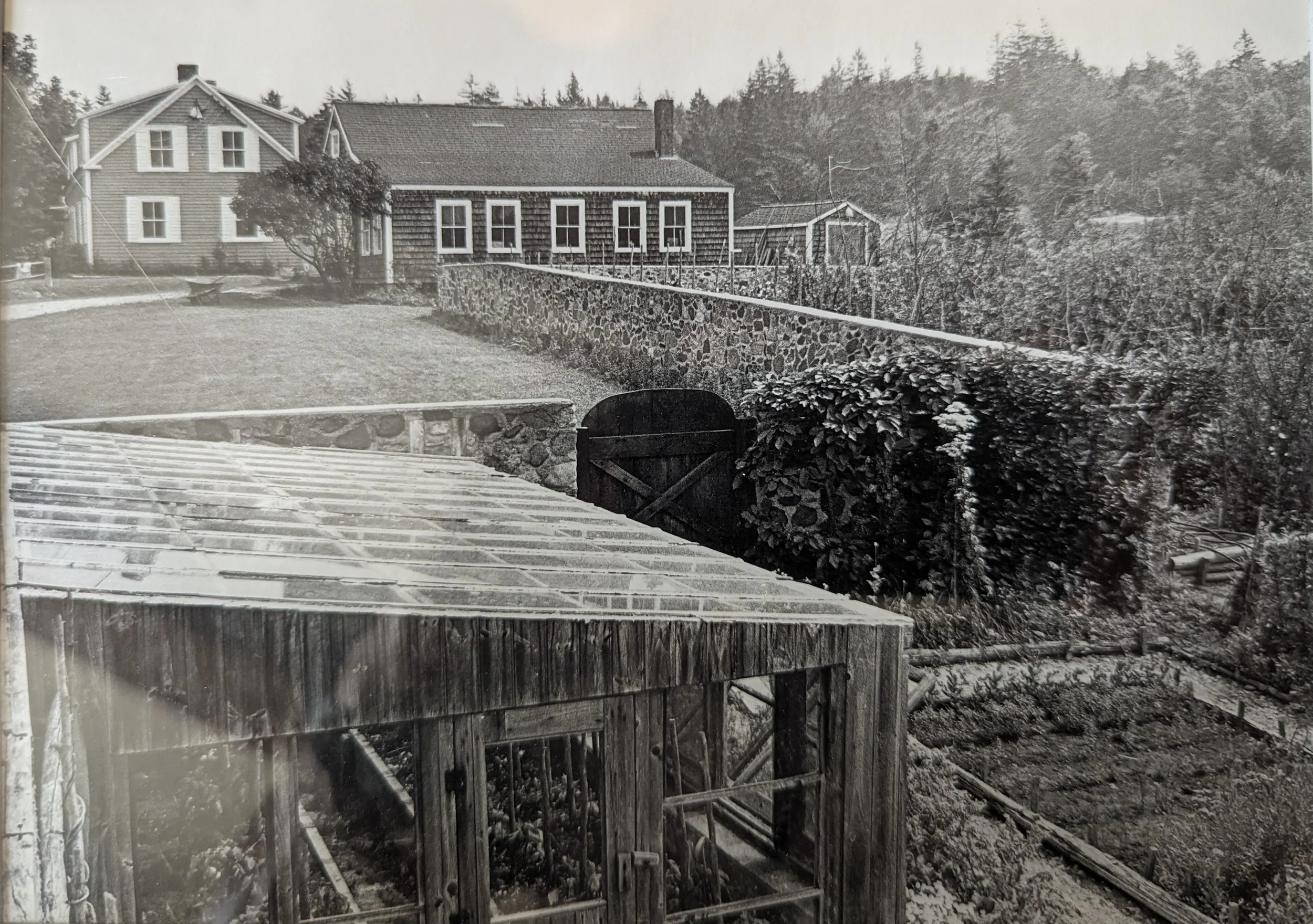
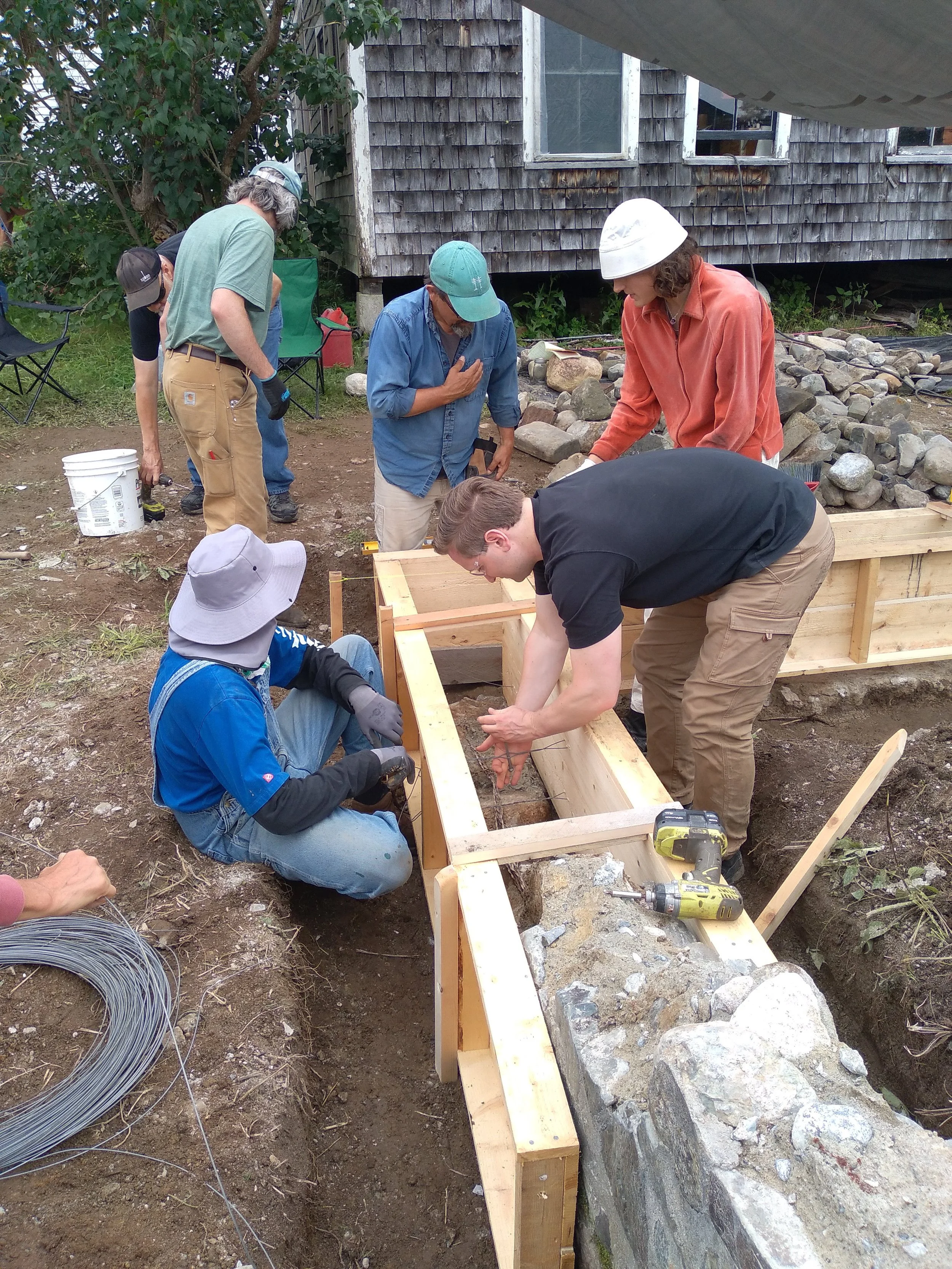
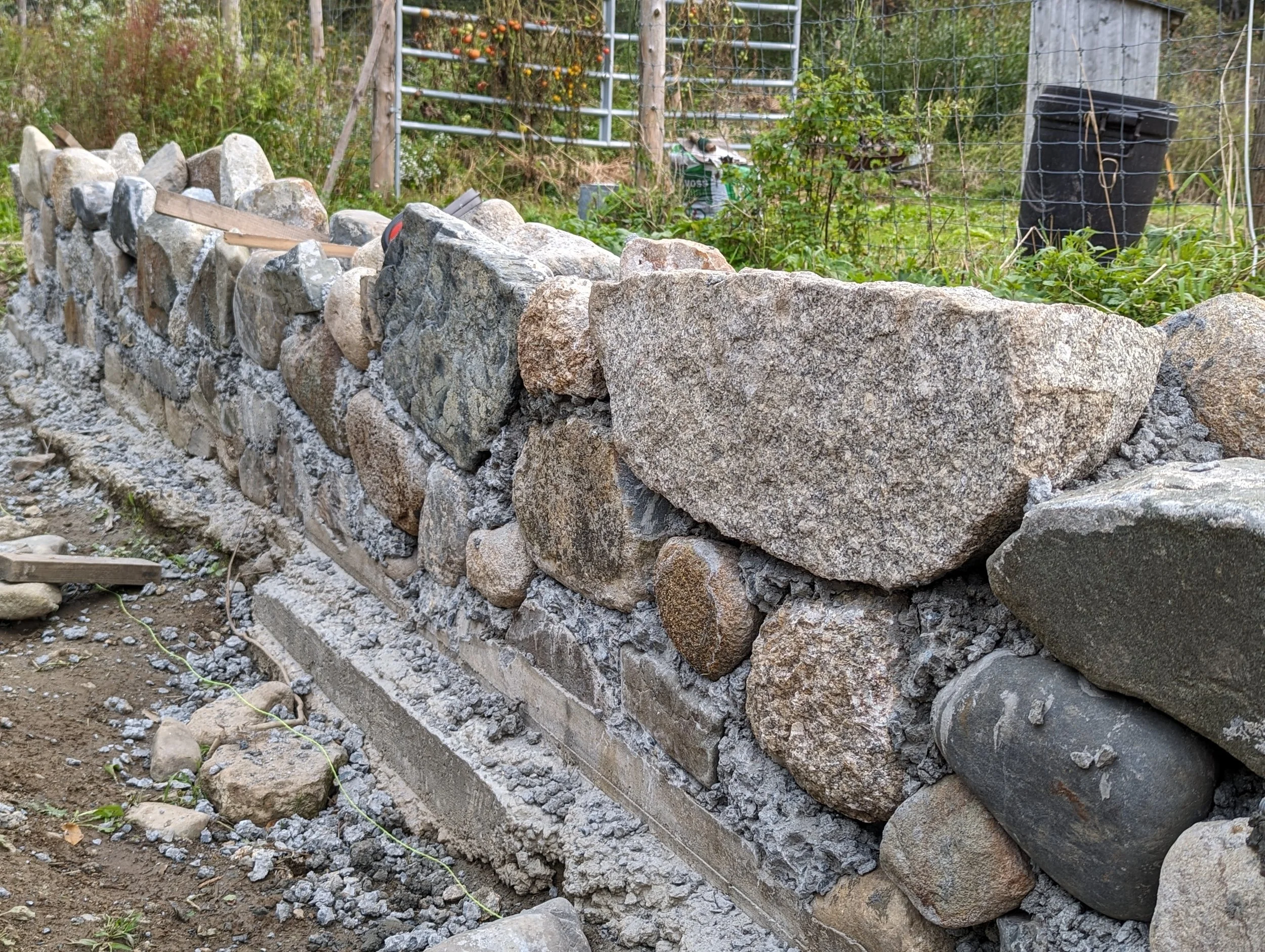

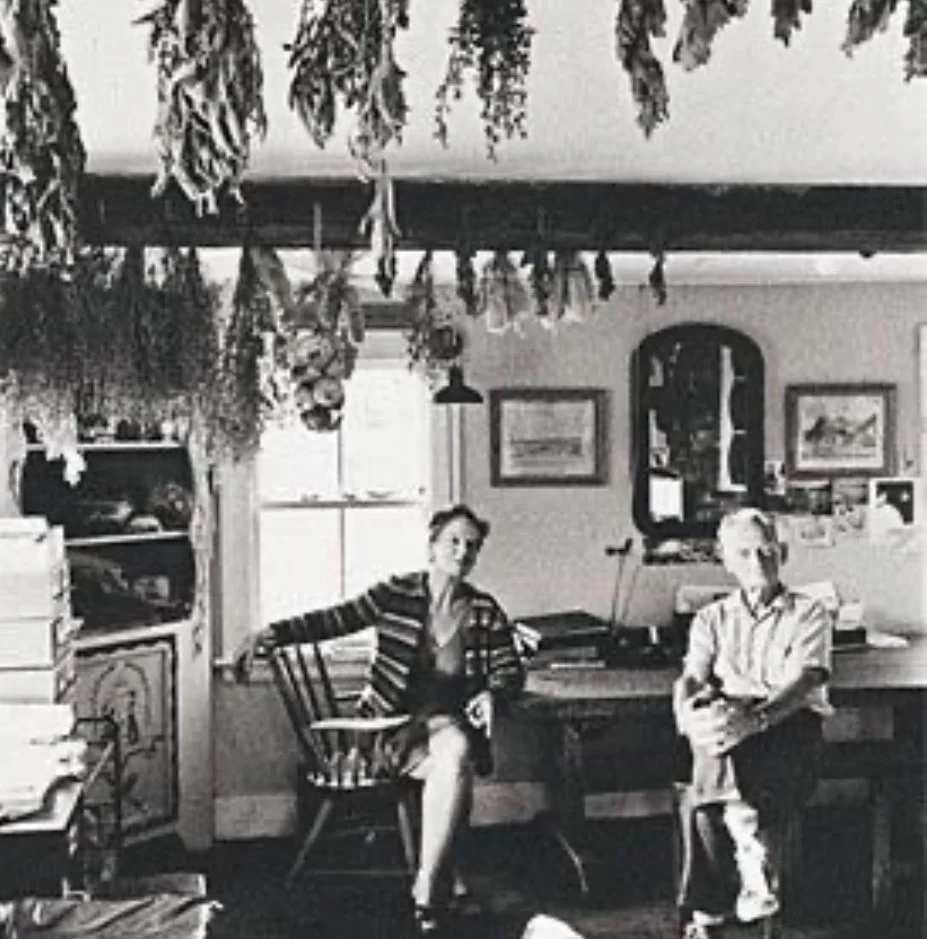

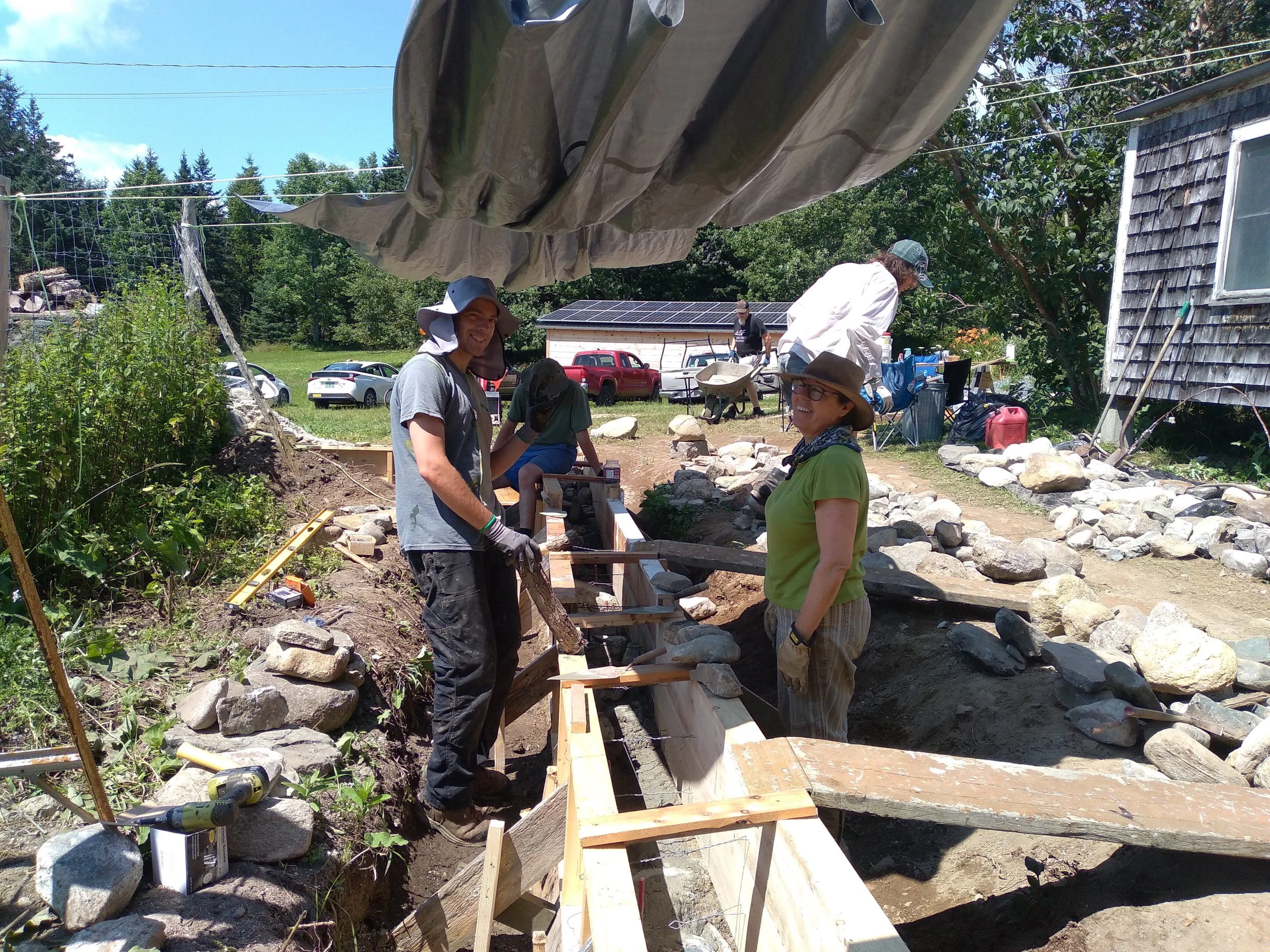
The town of Brooksville is in one of the most beautiful areas of Maine. Cape Rosier is a part of the Brookvilles and is a true cape, where Smith Cove curving in on the west and Orcutt's Harbor pushing in on the east form Cape Rosier's stem. Being a cape, the sea's coves, inlets, marshes, bays and beaches are forever around it, a place where on certain days “sun, fog, the waters edge, woods and the far off became an amoebic meld.”
This entire area had been part of the country of the Red Paint People, of the Tarratines, of the Penobscot Indians. An Indian trading post had flourished at Castine long before the Plymouth Colony arrived in Massachusetts. The Indian name of the Cape was Mose Ka-Chick, meaning Moose's Rump.
After James Rozier explored Penobscot Bay and the Penobscot River in 1605, the cape was named in his honor. Over the years the spelling was simplified to Rosier,. The cape's entire southemmost land area, now including Harborside, was thickly wooded and taxed as wild land and remained uninhabited for years.
Skilled craftsmen came to the new land, many as apprentices, initially to honor their bond and, the bond fulfilled, to homestead. Most notable was John Alden, that "hopeful young man," a cooper indentured to the Mayflower Compact to keep the multiple casks of water, beer and "strong water" in safe condition.
There are remnants of early homesteads in this part of Cape Rosier but likely the initial inhabitant of the land the Nearing Homestead would occupy was George Ames, a boat builder of “extremely durable and in their own way, objects of beauty”. He surely had the gift of building for a lifetime as his barn, originally situated at Orr’s Cove, withstood being moved several hundred yards over rough ground on green tree trunks by the new occupant Mary Stackhouse to become the garage of the current house.
Mary Stackhouse, a proprietor and teacher at a kindergarten in Framingham, Mass had purchased the property in 1946. Her small family had complete faith in their ability to homestead the abandoned farmland to renovate the deserted farmhouse, and to live a full and rewarding life where all their plans and goals could materialize. They proceeded to salvage, restore and renovate the sturdy old George Ames house and boat barn with a goal of creating a guest house, lovingly documented in her book Half A Bubble Off Plumb.
Five years after the successful restoration of the buildings and property, Mary Stackhouse sold the property in 1951 to Scott and Helen Nearing, authors of Living the Good Life and subsequent Continuing the Good Life.
The Nearings continued their experiment in self-reliant living, setting about building a homestead using the same principles they had applied in Vermont. Over the course of many years they created a majestic walled garden, improved the soil through the application of composted seaweed gathered from Orr’s cove in buckets, grew much of their own food, and lived a life based on the principles of what Scott Nearing called “the good life” — a life that emphasized self-sufficiency, social justice, and ecological sustainability.
Their Maine homestead became a model and inspiration for many, attracting visitors and aspiring homesteaders from all over the country who were interested in their lifestyle and philosophies. They wrote extensively about their experiences and methods, including in books like “Living the Good Life” and “Continuing the Good Life,” which have been considerably influential in promoting ideas about sustainable living and homesteading.
By the time the Nearings arrived in Maine, Scott was a 70-year-old, blacklisted former economics professor and Helen a 48-year-old, occult-minded devotee of the proto–New Age Theosophy movement. The couple met in 1928, when Helen invited Scott, an outspoken socialist on the radical speakers’ circuit, to be a lecturer for a church gathering. Scott had lost his last university job years before, after being charged with sedition for publishing a pamphlet condemning the burgeoning military-industrial complex. He was acquitted but effectively banned from academia, and by the time he and Helen moved in together, he was living hand-to-mouth, partly on principle and partly from necessity. Though they both came from prosperous families, Scott and Helen set up in a cold-water flat in Manhattan, where Helen worked factory jobs while Scott continued writing pamphlets and books, mostly works of theory critiquing capitalism and imperialism. After creating a successful marble sugaring business in Vermont they tested their theories of self sufficiently and upon encroachment by ski resorts in the 50 and the attendant increase in land prices, the couple set their sights on Maine where land was affordable and plentiful.
“Taking a detailed map of Maine, Helen went back and forth, fixing her mind on the kind of place that we wanted and asking the pendulum to indicate that place. Consistently the pendulum circled the Penobscot area, at the head of the bay”. On hearing from organic farming friends at David’s Folly Farm that the Stackhouse homestead might be suitable “we lost no time the next morning in driving down the miles of narrow dirt roads that led to the Cape. On one side of the house the soil was predominantly clay, on the other side sandy loam. There was a bubbling spring on the edge of the woods that ran by gravity into the kitchen. Helen went into the house for a few minutes and satisfied herself that it was sunny and roomy. The farm was certainly isolated, down on a dead-end road with no near neighbors. It was on a lovely little westward-facing cove of its own. The land could be brought back to good tilth”
“As the snow melted in the late spring, and planting beckoned to us, we went up to work over the new-plowed land that was to be our Maine garden for the next quarter century.”
In 1976, when Helen was in her 70's and Scott in his 90's the Nearings built again, a stone house on an adjoining parcel, today known as the 'Good Life Center'. They sold twenty acres of land surrounding the homestead and converted boat barn to Stanley Joseph, who, in collaboration with Lynn Karlin published an extraordinarily beautiful volume of photographs and text entitled, Maine Farm. Stanley and Lynn worked the land, improved the homestead, and hosted May Pole gatherings and built a sauna close to the house. On Stanley’s passing the house was left to brother Jay and after 40 years in the Joseph family, the homestead was purchased by its current owner Ned Reynolds from Newport, Rhode Island who is currently lovingly restoring the house and property to it’s former grandeur, rebuilding walls that have faltered after years of service and re-cultivating the original blueberry bushes established by Mary Stackhouse and family, which was to become a cash crop a central aspect of the Nearing’s economical model.
Meet the Nearing Homestead’s new owner Ned Reynolds, originally of Newport, Rhode Island, who now makes Harborside his home who has spent the last number of years restoring the homestead to it’s former glory.


